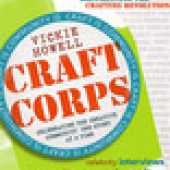Geiger Counter Readings in Seattle, WA on January 9, 2012
Geiger Counter Readings in Seattle, WA on January 9, 2012
Ambient office = .119 microsieverts per hour
Ambient outside = .092 microsieverts per hour
Soil exposed to rain = .107microsieverts per hour
Sliced almonds from grocery store = .100 microsieverts per hour
Tap water = .125 microsieverts per hour
Filtered water = .101 microsieverts per hour
Geiger Counter Readings in Seattle, WA on January 8, 2012
Geiger Counter Readings in Seattle, WA on January 8, 2012
Ambient office = .097 microsieverts per hour
Ambient outside = .143 microsieverts per hour
Soil exposed to rain = .115 microsieverts per hour
Iceberg lettuce from grocery store = .085 microsieverts per hour
Tap water = .129 microsieverts per hour
Filtered water = .106 microsieverts per hour
Links for January 9, 2013
Peaceful Atomic Bombs 3 - Project Orion
Since the development of nuclear bombs in the 1940s, suggestions have been made for possible civilian peaceful uses of these powerful explosives. The United States explored some of these possibilities in Operation Plowshare and the Soviet Union worked on them in their Nuclear Explosives for the National Economy program. The primary use was for large scale earth moving but there were other uses such as seismic exploration and sealing major leaks in gas fields that were considered. Despite the hostility between these two nations during the Cold War, there were several bilateral conferences where scientists from the two nations compare notes on their experiments. After over one hundred explosions were triggered during the tests, in the end, both of these projects were cancelled due to technical problems, environmental pollutions and public opposition. Since the Soviet ended its program in 1989, there have been no other serious explorations of peaceful use of nuclear explosions.
One project that was proposed in the U.S. but never developed involved the use of nuclear explosions to power a spaceship by what was called Nuclear Pulse Propulsion. A company called General Atomics initiated research into such possibilities in what was called Project Orion in 1958.
The basic concept was to build a spaceship that would have a shock absorbing disk on the back end. Nuclear bombs, either fission or fusion, would be tossed out of a hole in the center of the disk and their explosions would accelerate the ship. Theoretically, the idea was found to be quite attractive. Space propulsion systems are rated on “thrust” and “specific impulse”. The thrust is a measure of how much force the propulsion system can generate. To launch a vehicle into space, the thrust must be greater than the force of gravity, analogous to horsepower in a car. Specific impulse is a measure of how much speed can be generated by a unit mass of propellant, analogous to miles per gallon in a car. Usually, in space propulsion systems, there is a trade-off between thrust and specific-impulse but for the proposed nuclear propulsion has both high thrust and high specific impulse.
One drawback of the NPP engine is the fact that its thrust comes in the form of explosive bursts. This means that there must be a way to absorb the shock of each blast and protect the rest of the ship from being shaken apart by changing stresses. In addition, there is the problem of intense radiation from the bomb blasts. The rest of the ship and especially the crew must be protected from the radiation. The shock absorber disk can also provide shielding. The design of such a craft would be long and thin with the engine on one end and the crew quarters as far away as possible on the other end.
With the passage of the Partial Nuclear Test Ban Treaty in 1963 which prohibited nuclear explosion in space, interest in Project Orion waned and the project was dropped in 1965. Through the years since, a number of studies have been done on different configurations of shape and nuclear propulsion for interstellar craft for exploring beyond the solar system. Some of these designs would utilize a greater number of small nuclear explosions from pellets as opposed to the nuclear bombs envisions for Project Orion.
Artist’s conception of a Project Orion vehicle from NASA:
Peaceful Atomic Bombs 2 - Nuclear Explosions for our National Economy
While the United States had Operation Plowshare to explore the peaceful use of nuclear explosions, the Soviet Union also had a similar program. It was called Nuclear Explosions for the National Economy (NENE). A literal descriptive name but lacking in the resonance of Operation Plowshare.
Following the detonation of their first nuclear bomb in 1949, the Soviets said that although they would have as many nuclear bombs as they needed in case of a war, they were dedicated to the peaceful use of such explosives for “blowing up mountains, changing the course of rivers, irrigating deserts, and charting new paths of life in regions untrodden by human foot.” However, they strongly advocated total nuclear disarmament and this impeded their research into peaceful uses for nuclear explosives.
The Soviets waited until the mid-1960s to start their NENE program. Initially aimed excavation and petroleum stimulation, their program eventually expanded into other areas of interest. Broadly speaking, the Soviets were conducting tests for two categories of applications.
Employment of Nuclear Explosive Technologies in the Interests of National Economy was the name for the part of NENE that was focused on creating underground water reservoirs, dams and canals and the creation of huge underground caves as places to store dangerous toxic waste. Between 1965 and 1989, the Soviets exploded one hundred and twenty four nuclear devices in research on these possible uses for excavation.
Peaceful Nuclear Explosive Technologies in the Interests of National Economy was the name for the other part of NENE. It focused on the use of nuclear explosions as a ground wave generator for seismological mineral exploration, shattering bodies of ore to make mining easier, cracking underground formations to make the extraction of gas and oil easier, and created underground chambers to store the gas and oil. This part of NENE exploded one hundred and fifteen nuclear devices as part of their research.
In addition to all of the test explosions, the Soviet Union actually used nuclear explosions in real world applications in several cases. A gas field in Uzbekistan had been burning out of control for three years when a thirty kiloton nuclear device was used to snuff out the fire. A forty five kiloton nuclear device was used to seal a blow out in another gas field.
Some of these underground tests released radioactivity into the atmosphere that was detected beyond their borders. Another test failed in its objective but polluted local water with plutonium that remained far beyond safety limits for decades. A third blast release a radioactive plume in near a populated area and the site could have been flooded by a nearby river which could have polluted a huge area.
NENE ended in 1989 as a part of the Soviets unilateral moratorium on nuclear testing. Overall, the results of the tests were disappointing with respect to the goals of the tests and showed many problems with the civil use of nuclear bombs.
Lake Chagan in Kazakhstan created by a nuclear explosion:
Peaceful Atomic Bombs 1 - Operation Plowshare
The primary use of nuclear bombs is as weapons. They are compact and extremely powerful. However, conventional explosives find use in civilian applications such as excavations for mining and construction. Early in the history of nuclear explosives, the suggestion was made that they might have use for such peaceful purposes.
The U.S. Atomic Energy Commission had worked during the 1950s to convince the American public that atomic research and development was important for many civilian uses such as nuclear medicine and nuclear power generation. However, the Korean War and the Cold War had created an atmosphere of fear around nuclear science because of the threat of nuclear annihilation. The U.S. government wanted to counter that fear by encouraging the public to believe that the use of atomic bombs could be valuable for civilian projects. They needed to maintain the public’s confidence and support for pouring money into nuclear research much of which aided nuclear weapon research.
Operation Plowshare (or Project Plowshare) was a child of Eisenhower’s Atoms for Peace program. The project was formally launched in 1957. In 1960, Eisenhower’s Vice President delivered a speech in which he discussed the new. He touted the great possibilities of what he called “atomic dynamite” for moving mountains and digging harbors and canals.
In 1961, Operation Plowshare began testing nuclear bombs for the purpose of earth moving by underground detonation. The idea was to control the placement and size of craters to enabled controlled earthmoving for such things as harbors and canals, mountain passes, earth dams and underground storage caves for water or natural gas. Potential projects were brought forward such as carving a harbor into the coastline of Alaska and digging an alternative to the Panama Canal between the Gulf of Mexico and the Pacific Ocean. Another possible idea was that nuclear blasts underground could release natural gas locked in the rock or “atomic” fracking. Between 1961 to 1973, 27 atomic bombs were exploded as part of Operation Plowshare, most of them at the Nevada Test site.
Unfortunately, it turned out that even underground explosions resulted in release of radioactive materials into the atmosphere. Exact control of the dimensions of the craters were difficult. Underground nuclear explosions to extract natural gas were not as productive as anticipated and residual radioactivity contaminated the gas released. Underground explosions can contaminate underground water threatening supplies for human consumptions and irrigation. Underground nuclear explosions could also aggravate faults lines causing earthquakes.
Operation Plowshare failed to produce useful results and there was a public backlash against the use nuclear bombs within the borders of the United States, especially near concentrations of population. The last test explosion was in 1973 and all funding ended in 1977. It is estimated that over seven hundred and seventy million dollars was spent during the life of the project. To date, the U.S government has not made public any consideration of further use of atomic bombs for civilian purposes.
Operation Plowshare test crater:
2013 Seattle Wedding Show
True, it's early January and the new year is young, but that's not the mentality of brides-to-be and prospective bridal retailers. Spring is the season of love and afternoon garden weddings all over the Puget Sound. Maybe you're a blushing bride-to-be. Maybe you're a future maid of honor. Maybe you're a future wedding guest. Or maybe, you are simply crazy about weddings and everything they entail. No matter your status, the Seattle Wedding Show is this weekend, January 12-13, at the Washington State Convention Center in downtown Seattle. Tickets are $17 and available online.
Don't miss the live fashion show featuring collections from local, regional and international designers and their respective gown sales, along with wedding florists, photographers, consultants, jewelers, caterers and many other figures from the wedding planning industry. Local bridal boutiques participating in the gown sales include A Princess Bride, Benita's Bridal, Kirstie Kelly Signature Designs for Costco and Weddings With Joy. Here's a sneak peek of a few featured designer collections from Seattle area bridal boutiques. Ding dong! The bells are gonna chime; get me to the church on time!
Alfred Angelo
Allure
House of Wu
Got the running bug?
More and more people are catching the running bug because of friends and family who are healthy, happy and running consistently. Those who are just beginning their running kick often wonder where to start. Speed, distance, gear and techniques are all important components to know and have before you begin. Here are a few tips for new runners.
Be realistic
If you've never ran before, don't expect to run six-minute miles or half marathons your first few weeks. Start small and gradually increase your mileage and speed as you become more comfortable with the motion of running and breathing properly. Aim for a 10-minute mile or less initially to increase your heart rate and break a sweat. Try running two-three miles, two-three times a week to ease into running more. Increasing your mileage by 10 percent each week or every other week is a realistic amount if you're wanting to run longer and more often.
Run outside
There's no better reason to be running outside than when it's warm and pleasant during the summer months. Since it can be mighty hot during the middle of the day, try running early in the morning or later in the evening to limit exposure to hazardous UV rays. Avoid treadmills whenever possible. They're inaccurate at tracking speed and distance. Plus, why would you want to run on a treadmill, staring out the window, when you can be outside, breathing fresh air and enjoying the scenery?
Mix it up
Find different routes in your neighborhood that you can easily access from your front door. Although routes in other locations might be more desirable, you're less likely to run consistently if getting to your route is a chore. Loop runs and out-and-backs are usually easy to establish in urban and residential neighborhoods. If you live near a park, head there to run a few laps. Sidewalks and trails are runner friendly, too.
Get groovy
A great companion to an otherwise independent activity is music. Create a music playlist that will get you pumped up and excited to run on a regular basis. Listen to the radio, a book on tape, a podcast or your favorite artists while you get your run on. Remember to keep your music low enough so that you can hear oncoming traffic and don't disturb fellow pedestrians. Behind-the-neck headphones stay in place and never fall out if you have a problem keeping individual headphones in your ears when moving around.
Invest in cool kicks
Sound shoes are necessary unless you're a barefoot runner. Find shoes that fit you well and fit your running needs. You'll need more traction for trail running and a lighter shoe if you're racing on a track. Brooks and Nike offer top-of-the-line styles and designs for male and female runners. Yes, you'll spend a pretty penny on your shoes, but it's worth it and necessary for the miles that you'll put into them. Just do it. Added bonus if they're neon colors!
Sign up for a race
After you've been running for a month or so, consider signing up for a race like the Nucla Resolution 5K Run/Walk. A 5K (3.1 miles) is a good distance for new runners and a great way to connect and compete with runners in your area. Most races are $30 or less to register, you get a cool T-shirt and a free meal and/or snacks after the race. Plus, there's no better motivator to get out and run than when you're training for a specific event.
Happy running!









